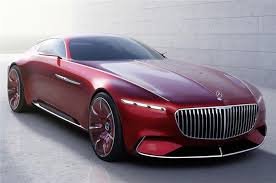Introduction
Mercedes-Benz, a name that evokes images of elegance, performance, and cutting-edge technology, has been a symbol of automotive excellence for over a century. Founded in 1926, this German automaker has a storied history filled with iconic cars and a commitment to innovation. In this blog, we'll explore the rich heritage of Mercedes-Benz and its enduring legacy in the world of luxury automobiles.
The Dawn of Mercedes-Benz
The history of Mercedes-Benz begins with two pioneers of the automotive industry, Karl Benz and Gottlieb Daimler. Karl Benz is credited with inventing the first gasoline-powered car in 1886, while Gottlieb Daimler developed a high-speed petrol engine around the same time. These innovations laid the foundation for the merger of their respective companies in 1926, resulting in the birth of Mercedes-Benz.
Iconic Models
Mercedes-Benz has consistently produced vehicles that redefine the standards of luxury and performance. Some of the most iconic models in the company's history include:
The Mercedes-Benz 300SL "Gullwing" (1954): Known for its distinctive upward-opening doors, the 300SL was a sports car ahead of its time and became an instant classic.
The Mercedes-Benz S-Class (introduced in the 1950s): This flagship sedan has consistently set the benchmark for automotive luxury, combining state-of-the-art technology with opulent interiors.
The Mercedes-Benz 190E "Cosworth" (1983): A collaboration with Cosworth, this compact sedan was a high-performance powerhouse and a precursor to Mercedes-AMG models.
The Mercedes-Benz G-Class (introduced in 1979): Originally a military vehicle, the G-Class has evolved into a luxurious and capable SUV, loved by celebrities and off-road enthusiasts alike.








0 Comments